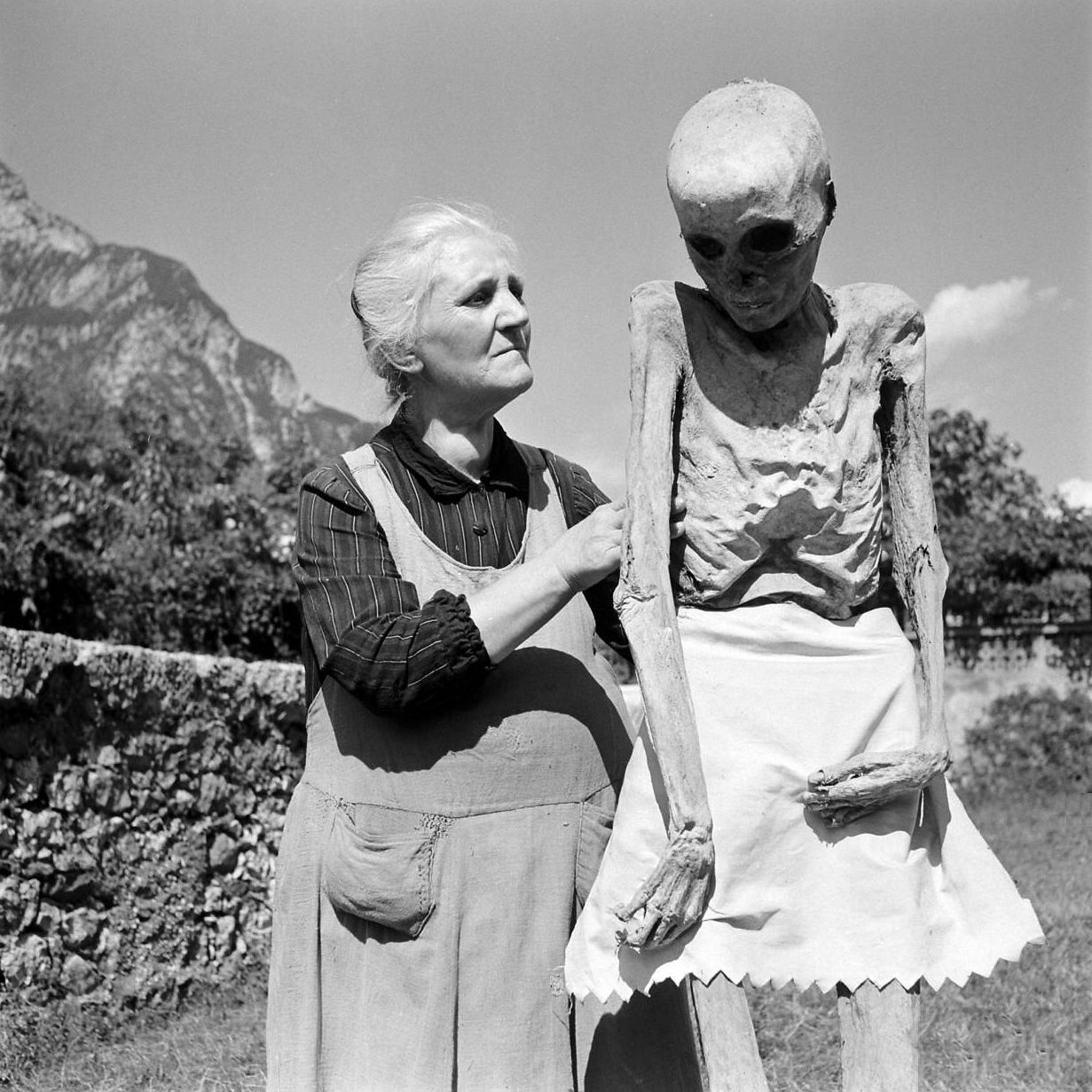
In the quaint Italian village of Venzone, a peculiar tradition once captivated locals and visitors alike: the phenomenon of “walking” mummies. Dating back to the 1950s, photographs from that era depict villagers engaging in seemingly casual strolls with mummified bodies, a practice that may seem bizarre to contemporary sensibilities.
The origins of this tradition trace back to 1647 when a remarkable discovery was made in the village cemetery’s chapel crypt. Within the confines of the crypt, perfectly preserved remains were found, spared from the usual processes of decomposition, thanks to the unique properties of the local soil and the presence of the fungus Hipha Bombicina.

These exceptionally preserved bodies, numbering 42 in total, became the focal point of a curious custom in Venzone. Local residents embraced the mummies as part of their community, engaging in activities such as taking photographs with them, conversing with them, and even bringing them along on visits to the church. The presence of these mummies became a source of fascination for tourists, adding to the village’s allure as a destination.
However, the tradition of “walking” mummies met an abrupt end in 1976 when a devastating earthquake struck Venzone, destroying much of the village, including a significant portion of the mummies. Today, only 15 of the original 42 mummies remain, with the rest lost to the ravages of time and natural disaster.

The surviving mummies have since found their final resting place in the crypt of St. Michael, situated near the Cathedral of St. Andrei within the village. While the era of “walking” mummies may have passed, the legacy of this unique tradition endures as a testament to the resilience and eccentricity of Venzone’s history.
Reflecting on the phenomenon of “walking” mummies offers a fascinating glimpse into the intersection of culture, tradition, and mortality. Despite its unconventional nature, the practice served as a poignant reminder of the ways in which communities navigate the complexities of death and remembrance.
In conclusion, the story of Venzone’s “walking” mummies serves as a reminder of the enduring power of human curiosity and the ability of tradition to shape the fabric of a community. Though the mummies may no longer roam the streets of Venzone, their legacy lives on in the collective memory of those who once participated in this extraordinary custom.





